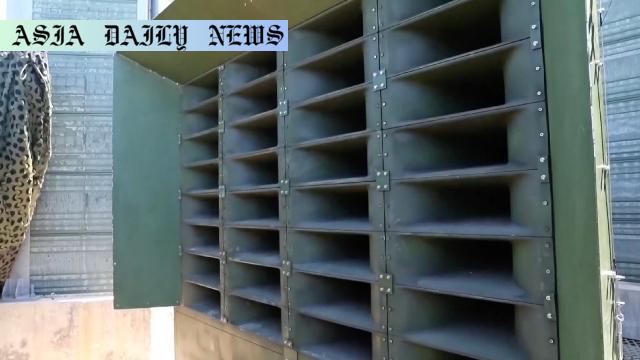Propaganda dismantling begins as South Korea takes steps to ease inter-Korean tensions under President Lee’s conciliatory approach.
- South Korea has begun dismantling propaganda loudspeakers aimed at North Korea.
- President Lee’s conciliatory policies mark a departure from the previous hardline stance.
- Approximately 20 fixed loudspeakers will be removed in the next few days.
- Despite these efforts, Pyongyang remains unreceptive to dialogue offers.

South Korea’s Bold Move to Ease Tensions
South Korea has taken a significant step towards fostering peace on the Korean peninsula by dismantling several loudspeakers used for broadcasting propaganda along the border with North Korea. These loudspeakers had been a potent symbol of the volatile relationship between the two countries, delivering pro-South messaging, pop culture, and news across the Demilitarized Zone (DMZ) for decades. While designed to inform and influence the North Korean public, these broadcasts were often perceived as provocative by Pyongyang, exacerbating tension.
President Lee Jae-myung, who assumed office in June, is spearheading this conciliatory initiative, contrasting sharply with the rigid stance of his predecessor, Yoon Suk-yeol. Lee’s administration has not only halted the use of such loudspeakers but has also commenced their complete removal, with the South Korean military confirming that around 20 fixed installations will be dismantled within days. This move aims to build trust between the two Koreas and demonstrate Seoul’s commitment to fostering dialogue and reducing hostility, despite the persistent challenges from the North.
A Shift in Strategy: From Hardline to Conciliation
The approach under President Lee marks a significant departure from South Korea’s recent history of stark opposition toward North Korea. Former President Yoon adopted a hardline policy, characterized by a strict focus on military strength and retaliatory measures. By contrast, Lee’s administration is employing strategies rooted in dialogue, cooperation, and the eventual early resumption of talks with Pyongyang. While the removal of loudspeakers may appear symbolic, it sends a broader message of reconciliation and willingness to mitigate the entrenched animosity between the nations.
Lee’s policies aim to focus on healing the divided peninsula and seeking avenues to construct a peaceful coexistence. However, gestures like these are greeted with skepticism in Pyongyang, as evidenced by statements from Kim Yo Jong, the influential sister of North Korean leader Kim Jong Un. Her recent rejection of South Korea’s calls for dialogue underscores the adversity Seoul faces in bridging the wide political and ideological divide.
Challenges and the Road Ahead
Despite the optimistic undertones of South Korea’s recent measures, achieving tangible results in inter-Korean relations will remain a herculean task. North Korea continues to perceive the South as a threat, labeling Seoul as a hostile nation. Kim Yo Jong’s outright dismissal of South Korea’s proposals illustrates the depth of mistrust deeply embedded in their relationship.
For real progress to materialize, broader efforts engaging regional allies and international stakeholders are necessary. South Korea’s unilateral actions, like dismantling the loudspeakers, must be complemented by multilateral initiatives to create a robust framework for peace. Encouraging Pyongyang’s participation in future negotiations will require a blend of incentives and diplomatic persistence, as dictated by the geopolitical complexities of the Korean Peninsula.
The Symbolism of Propaganda Loudspeakers
The loudspeakers, once powerful tools of psychological warfare, symbolize the entrenched hostility that has defined the Korean divide. By removing them, South Korea signals its readiness to turn the page and inspire hope for a different future. However, actions like these must be met with reciprocal measures from the North to make any lasting impact.
Ultimately, South Korea’s recent efforts represent the beginning of a fresh chapter and a chance to pursue diplomacy in one of the world’s most stubbornly contentious regions. Only time will reveal whether these measures can genuinely dismantle the barriers of mistrust and hostility that have fortified the DMZ for decades.



Commentary
Significance of Dismantling the Loudspeakers
The decision by South Korea to dismantle its propaganda loudspeakers marks a bold yet cautious gesture in the pursuit of peace. It demonstrates President Lee Jae-myung’s commitment to adopting a more conciliatory approach toward North Korea, moving away from the division-fueled policies of the past. By taking tangible steps to reduce provocations, South Korea shows its resolve to shift the tone and reset its relations with Pyongyang.
The Role of Trust in Diplomatic Efforts
While initiatives like these are undoubtedly symbolic, they carry substantial weight in inter-Korean dynamics. Trust—the cornerstone of diplomacy—requires actions that go beyond mere rhetoric. By removing the loudspeakers, South Korea extends an olive branch, urging its neighbor to consider dialogue and alleviate hostility. However, trust cannot be built unilaterally. Pyongyang’s outright rejection of Seoul’s proposals underscores the challenges inherent in reconciling such divergent ideologies and aspirations.
The Path Forward: Balancing Optimism and Realism
The road to peace on the Korean Peninsula remains fraught with obstacles, but South Korea’s steps should not be dismissed. They reflect a willingness to engage and a deep understanding that peace is predicated on incremental progress, patience, and sustained efforts. To ensure lasting peace, it is vital for regional players and global powers to support such conciliatory measures, fostering a united front toward stability. This act of dismantling propaganda tools might just be the first brick in the foundation of a hopeful future for inter-Korean relations.